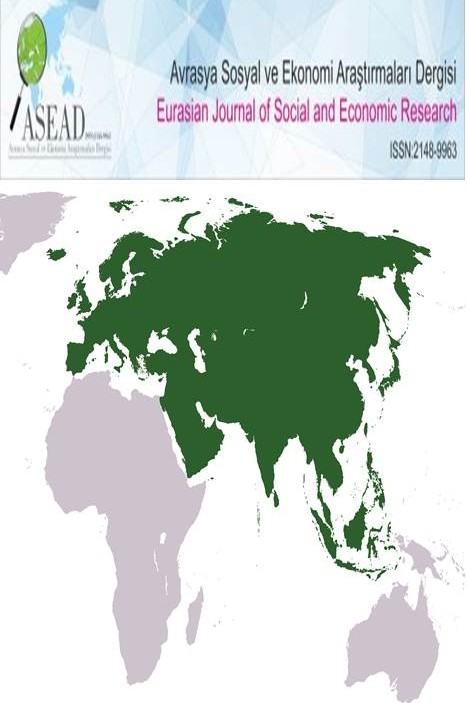THE IMPACT OF THE USE OF BLENDED LEARNING TECHNOLOGY IN SCHOOL MATHEMATICS EDUCATION ON THE EFFECTIVENESS OF TEACHING
mathematical education, blended learning, technology, school
The impact of the use of blended learning technology in school mathematics education on the effectiveness of teaching
matematik eğitimi, karma öğrenme, teknoloji, okul,
___
- Acelajado, M. J. (2011). Blended learning: a strategy for improving the mathematics achievement of pupils in a bridging program. Electronic Journal of Mathematics and Technology, 5(3), 342-352. Blended learning: a strategy for improving the mathematics achievement of pupils in a bridging program - Document - Gale Academic OneFile
- Attard, C., & Holmes, K. (2020). An exploration of teacher and student perceptions of blended learning in four secondary mathematics classrooms. Mathematics Education Research Journal, 1-22. https://link.springer.com/article/10.1007/s13394-020-00359-2
- Barkatsas, A. T., Kasimatis, K., &Gialamas, V. (2009). Learning secondary mathematics with technology: Exploring the complex interrelationship between pupils’ attitudes, engagement, gender and achievement. Computers & Education, 52(3), 562-570. https://doi.org/10.1016/j.compedu.2008.11.001
- Bonk C. J., Graham, C. R. (2006). Handbook of blended learning: Global perspectives, local designs. San Francisco, CA: Pfeiffer Publishing
- Carman, J. M. (2002). Blended learning design: Five key ingredients. https://www.it.iitb.ac.in/~s1000brains/rswork/dokuwiki/media/5_ingredientsofblended_learning_des ign.pdf
- Cavalli, E., Gnudi, A., Iovino, D., Lorenzi, A., &Malvisi, L. (2007, June). Lecturer perception of the effectiveness of blended learning and institutional support mechanisms. In EDEN 2007 Annual Conference. https://lorenzi.info/doc/EdenNaples07.pdf
- Cekici, E., &Yildirim, H. (2011). A review on mathematics education. Marmara University Journal of Economics and Administrative Sciences, 31(2), 175-196. https://dergipark.org.tr/en/pub/muiibd/issue/498/4452
- Charlier, B., &Platteaux, H. (2005). Effects of a blended learning system for university teachers training. journal of educational research, 19(3), 276-300. https://www.unifr.ch/nte/fr/assets/public/files/publications_scientifiques/EARLI2005_Article_BCHP_V 32.pdf
- Creswell, J. W., & Poth, C. N. (2016). Qualitative inquiry and research design: Choosing among five approaches. Sage publications. Poth - Google Kitaplar
- Fogarty, G., Cretchley, P., Harman, C., Ellerton, N., &Konki, N. (2001). Validation of a questionnaire to measure mathematics confidence, computer confidence, and attitudes towards the use of technology for learning mathematics. Mathematics Education Research Journal, 13(2), 154-160. https://link.springer.com/article/10.1007/BF03217104
- Friesen N. (2012). Defining Blended Learning [Отчет] https://www.normfriesen.info/papers/Defining_Blended_Learning_NF.pdf
- Garrison, D. R., & Vaughan, N. D. (2008). Blended learning in higher education: Framework, principles, and guidelines. John Wiley & Sons. https://doi.org/10.1002/9781118269558
- Graham, C. R. (2006). Blended learning systems. The handbook of blended learning: Global perspectives, local designs, 1, 3-21.The Handbook of Blended Learning: Global Perspectives, Local Designs - Curtis J. Bonk, Charles R. Graham - Google Kitaplar
- Heba, E. D., &Nouby, A. (2008). Effectiveness of a blended e-learning cooperative approach in an Egyptian teacher education programme. Computers & Education, 51(3), 988-1006. https://doi.org/10.1016/j.compedu.2007.10.001
- Kholifah, N., Sudira, P., Rachmadtullah, R., Nurtanto, M., &Suyitno, S. (2020). The effectiveness of using blended learning models against vocational education student learning motivation. International Journal, 9(5), 7964-7968. https://doi.org/10.30534/ijatcse/2020/151952020
- Kim, C., & Baylor, A. L. (2008). A virtual change agent: Motivating pre-service teachers to integrate technology in their future classrooms. Journal of Educational Technology & Society, 11(2), 309-321. https://eric.ed.gov/?id=EJ814111
- Kuo, Y. C., Walker, A. E., Belland, B. R., Schroder, K. E., &Kuo, Y. T. (2014). A case study of integrating Interwise: Interaction, internet self-efficacy, and satisfaction in synchronous online learning environments. International Review of Research in Open and Distributed Learning, 15(1), 161-181. https://doi.org/10.19173/irrodl.v15i1.1664
- Larsen, A. J. (2013). Experiencing a flipped mathematics class (Doctoral dissertation, Education: Faculty of Education). http://summit.sfu.ca/item/13608
- Marshall, C., &Rossman, G. B. (2014). Designing qualitative research. Sage publications. Designing Qualitative Research - Catherine Marshall, Gretchen B. Rossman - Google Kitaplar
- Lilje, O., & Peat, M. (2012). Use of traditional and elearning components in a blended learning environment. In Proceedings of The Australian Conference on Science and Mathematics Education.https://openjournals.library.usyd.edu.au/index.php/IISME/ articleview/6369
- Oh, E., & Park, S. (2009). How are universities involved in blended instruction?. Journal of Educational Technology & Society, 12(3), 327-342. https://eric.ed.gov/?id=EJ857449
- Osguthorpe, R. T., & Graham, C. R. (2003). Blended learning environments: Definitions and directions. Quarterly review of distance education, 4(3), 227-33. https://www.learntechlib.org/p/97576/
- Purnima V.(2002). Blended Learning Models. Published: August, 2002. URL: https://www.purnima-valiathan.com/wp-content/uploads/2015/09/Blended-Learning-Models-2002-ASTD.pdf
- Reed, H. C., Drijvers, P., &Kirschner, P. A. (2010). Effects of attitudes and behaviours on learning mathematics with computer tools. Computers & education, 55(1), 1-15. https://doi.org/10.1016/j.compedu.2009.11.012
- So, H. J., & Brush, T. A. (2008). Student perceptions of collaborative learning, social presence and satisfaction in a blended learning environment: Relationships and critical factors. Computers & education, 51(1), 318- 336. https://doi.org/10.1016/j.compedu.2007.05.009
- Singh, H., & Reed, C. (2001). A white paper: Achieving success with blended learning. Centra software, 1, 1-11. http://www.leerbeleving.nl/wbts/wbt2014/blend-ce.pdf
- Uluyol, A. G. C., &Karadeniz, S. (2009). An example of a blended learning environment, student achievement and opinions. Centennial University Journal of the Faculty of Education, 6(1), 60-84. https://dergipark.org.tr/en/pub/yyuefd/issue/13711/165995
- Wilson, D., &Smilanich, E. M. (2005). The other blended learning: a classroom-centered approach. John Wiley & Sons. https://docs.edtechhub.org/lib/Z3R5NFEU
- Yildirim, İ., &Vural, O. F. (2016). Student views on the blended learning process integrated into mathematics teaching. Journal of AhiEvran University Kirsehir Education Faculty, 17(2), 1-15. https://dergipark.org.tr/en/pub/kefad/issue/59426/853554
- Yushau, B. (2006). The effects of blended e-learning on mathematics and computer attitudes in pre-calculus algebra. The mathematics enthusiast, 3(2), 176-183. https://scholarworks.umt.edu/tme/vol3/iss2/5/
- Yayın Aralığı: Yılda 4 Sayı
- Başlangıç: 2014
- Yayıncı: İrfan TÜRKOĞLU
GRAPHICS CAPABILITIES IN PYTHON
Gulnur ABDİMANAPOVA, Lazzat ZHAİDAKBAYEVA, Sapargali ALDESHOV
FAMILY COMMUNICATION AS THE KEY TO SOLVING FAMILY CONFLICTS: A SOCIO-RELIGIOUS PERSPECTIVE
METHODS FOR SOLVING SYSTEMS OF BOOLEAN EQUATIONS
Hüseyin AKKUŞ, Ayash USSENBAY, Aziza KENZHE
ABOUT PERIODIC STATES OF SYSTEMS OF MASSSERVICE WITH PERIODIC PARAMETERS
THE IMPORTANCE OF ORGANIZING INDEPENDENT WORK IN CHEMISTRY LESSON
Asylzhan KENESBAY, Galiya MADYBEKOVA, Aliya KARMANOVA, Perizat ABDİGAPBAR
METHODS OF DEVELOPING INTERDISCIPLINARY COMMUNICATION IN TEACHING NATURAL SCIENCES
İLKOKUL ÖĞRENCİLERİNE SCRATCH PROGRAMLAMA ÖĞRETİMİNDE İSPRİNG'İ KULLANMA OLANAKLARI
Laura MİNNAKHMİTOVA, Almira IBASHOVA, Damira BELESOVA
